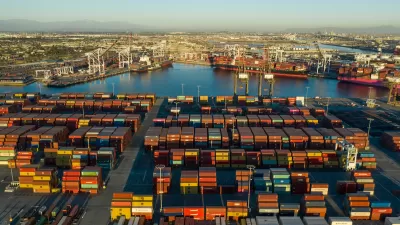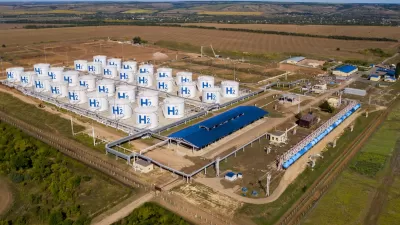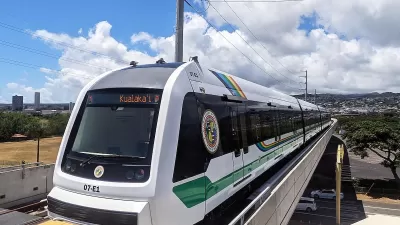As the cruise industry grows, being a port of call is an increasingly lucrative proposition. However, many cities are having a hard time balancing "the economic benefits of cruise ships against their cultural and environmental impact."
With the number of cruise passengers expected to increase by as much as 8 percent in the next year alone, Kim Severson uses Charleston as a case study to explore the dilemma that many of America's coastal cities are facing with how to balance being hospitable to cruise ships (and their customers) with concerns over environmental and cultural impacts.
In charming Charleston, "[t]he South Carolina Ports Authority wants to build a new ship terminal that port officials say will handle only one ship at a time, but the frequency of ships could increase," explains Severson. "Those dedicated to preserving a section of town whose buildings date to the 1700s worry that a new terminal will bring a damaging concentration of tourist traffic and larger cruise vessels."
"Port officials point out that cruise ships are a tiny slice of the city’s shipping traffic," she adds. "More than 1,700 vessels use the port every year, and only 85 of those are cruise ships. And cruise traffic, they say, is worth $37 million a year to the region."
"But this city takes its preservation seriously. The specter of more cruise ships has spawned three state and federal lawsuits and has placed the city’s historic district on the World Monuments Fund’s list of most endangered cultural sites."
FULL STORY: This Charleston Harbor Battle Is Over Cruise Ships

Planetizen Federal Action Tracker
A weekly monitor of how Trump’s orders and actions are impacting planners and planning in America.

Chicago’s Ghost Rails
Just beneath the surface of the modern city lie the remnants of its expansive early 20th-century streetcar system.

San Antonio and Austin are Fusing Into one Massive Megaregion
The region spanning the two central Texas cities is growing fast, posing challenges for local infrastructure and water supplies.

Since Zion's Shuttles Went Electric “The Smog is Gone”
Visitors to Zion National Park can enjoy the canyon via the nation’s first fully electric park shuttle system.

Trump Distributing DOT Safety Funds at 1/10 Rate of Biden
Funds for Safe Streets and other transportation safety and equity programs are being held up by administrative reviews and conflicts with the Trump administration’s priorities.

German Cities Subsidize Taxis for Women Amid Wave of Violence
Free or low-cost taxi rides can help women navigate cities more safely, but critics say the programs don't address the root causes of violence against women.
Urban Design for Planners 1: Software Tools
This six-course series explores essential urban design concepts using open source software and equips planners with the tools they need to participate fully in the urban design process.
Planning for Universal Design
Learn the tools for implementing Universal Design in planning regulations.
planning NEXT
Appalachian Highlands Housing Partners
Mpact (founded as Rail~Volution)
City of Camden Redevelopment Agency
City of Astoria
City of Portland
City of Laramie





























